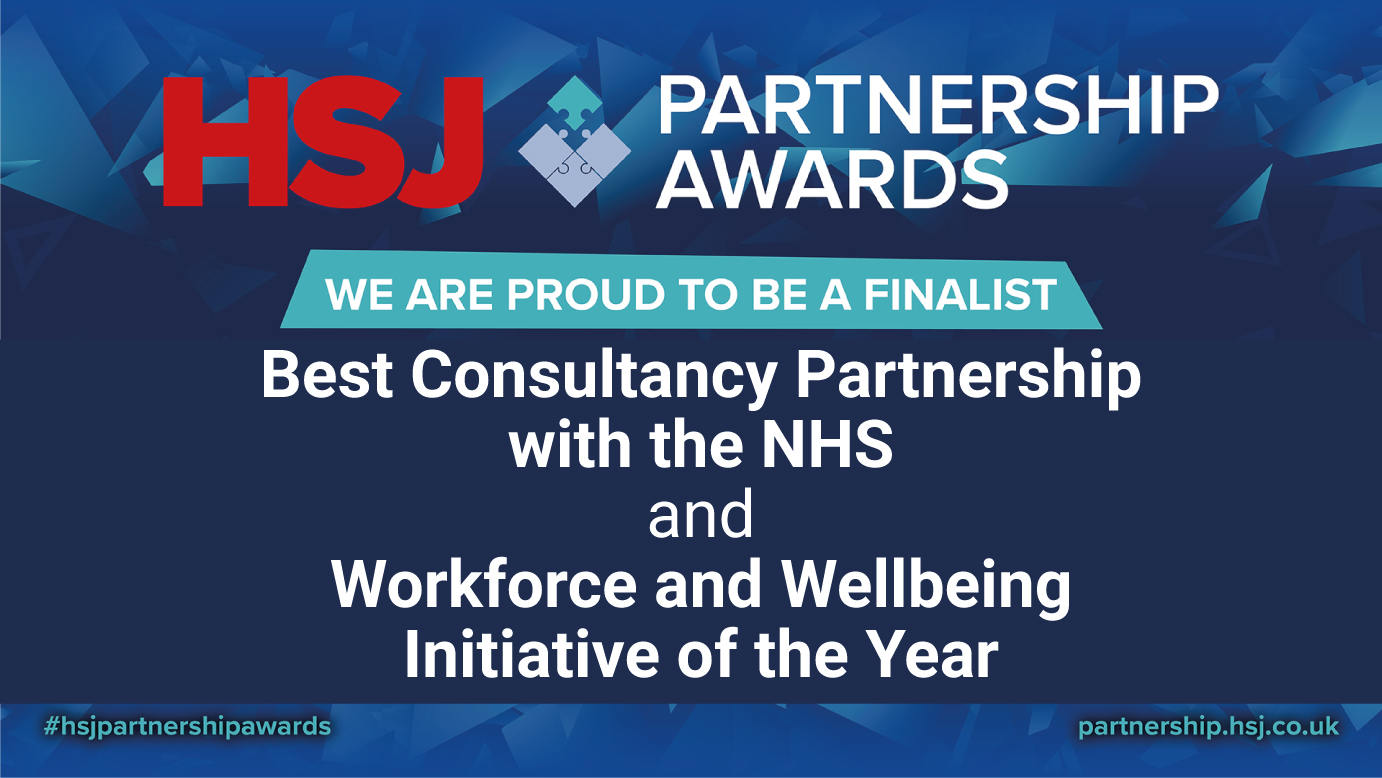I TOLD an AI How I'd Solve the NHS Workforce Crisis - Surprising Results?

The AI Experiment Exploring Uncharted Solutions
Recently I wrote a short article titled, ‘I Asked an AI How It Would Solve the NHS Workforce Crisis - Surprising Results?’, where I asked an AI Large Language model to come up with some innovative ideas to help solve the current workforce crisis. The exercise was one born out of interest, to see how a predictive model with no skin in the game would shape its own battle plan to find solutions. If nothing else it delivered some thought provoking ideas. Then I thought about what my response would be to that very same question and more importantly what would the same AI think of my solutions.
Results Beyond Conventional Wisdom
I have thought about this issue for a while and I will be honest, the solutions aren’t simple. I also thought about writing an article which outlined the problem and the possible solutions. Merely reiterating known issues and suggesting obvious remedies – like addressing staff shortages by simply hiring more staff – isn’t effective. Genuine, impactful solutions are more elusive.
Recognising the Real Challenges Swimming Without a lifeboat
My colleague recently said, it is like telling someone stranded in the middle of the ocean without a lifeboat, that they are:
- A. Stranded in the middle of the ocean
- B. they should think about getting a lifeboat.
Not at all helpful. So instead I thought to myself, well I asked the AI to come up with its solution, why don’t I tell it mine and see what it thinks. It may of course be a fruitless exercise, but who knows it could surprise me. In order for my solutions to make sense I think it is important to provide some context about my role in all of this.
Behind the Scenes: My Personal Journey with the NHS
Now for complete transparency, I do have skin in this game. I used to work in the NHS and my company does provide workforce solutions. Do these solutions solve all of the workforce problems in the NHS, absolutely not. I would like to be clear what I am advocating for in this article is not what we offer, it is a broader recognition of solving problems and providing some personal context. I am also not suggesting that my solution is the full solution, just my take on what I would do. It is indeed a multifaceted and complex issue and as such needs multifaceted blended resolutions.
Bureaucracy killed the innovation star!
When I used to work in the NHS in workforce management, I constantly encountered innovation blockers. Too often, I would float creative solutions only to be told the ideas required endless rounds of review. This stagnation was paralysing. I won’t sugar coat it, bureaucracy is an innovation killer.
Yet turning into a proverbial ‘pirate’ yielded results. Seeking forgiveness, not permission led to our biggest wins. Sadly I realised effecting change from within would be a long painful uphill battle. The inertia was too substantial. So 12 years ago, I made the decision to impact the system from the outside, where I believed less red tape would empower bigger strides, help more trusts, more staff and ultimately more patients. Of course, some obstacles remain no matter where you situate yourself. But I stay determined to push through.
Picking the right hill
So, with the best intentions we thought about how we could best serve the NHS. The answer we came to was a hill I would have happily died upon at the time. It was to provide great workforce systems to make processes easier. I mean if it is easier to do things, that’s better, right? Better is good? Right? Over the next 11 years that hill turned into a small mound and over the last 12 months, I have stomped what remained of that mound into the ground, and have recognised the potential error of my ways. This trait is one I have come to cherish. Understanding and embracing that you can be wrong is more empowering than you can imagine. We should all do it more often.
The System Misdiagnosis
You see like many, I realised that I had misdiagnosed the actual problem we were trying to solve. It really didn’t matter how good a system was, the process in itself was not the barrier to the results the trust wanted. It was far more simple than that, almost first principles esque. What stops trusts achieving their desired outcomes when using workforce systems? Two simple things. Time and Capacity. It is not capability, it’s not systems, it is not desire and it is certainly not for the want of trying.
Time and Capacity: The Overlooked Roadblocks
We could provide you with the best workforce systems ever built, but if you do not have the time or the capacity to use them then what use are they?
It’s like buying a shiny new car that you cannot drive. It does not matter how fast, or comfortable it is, whether it has drinks holders and parking sensors. It doesn’t even matter if it comes with a support crew who will change your tyres, show you how to drive it efficiently and provide you unlimited coffee for your journey. If you don’t have the time or capacity to drive it, it gathers dust in the garage. A car’s true purpose is to get you from A to B, if you cannot do that then it is purposeless. And, dare I say, a complete waste of money.
To be clear I am not saying systems are not an integral part of the solution, they most definitely are. In the right situation they are magnificent.
Home please, James.
Now, taking this car analogy further, what is the simple answer to fixing that problem? No, it is not taking the train or the bus, I mean it could be, if you always want to go where they are headed. In this case, however, the solution would be to get a driver, or a chauffeur, if you like. The solution is results oriented. Your driver will get you to point B, and the desired outcome is achieved. If the problem is time and capacity, focus on how you can eliminate them from the equation, simply put, hire a driver.
The True Cost of Mismanaged Workforce Planning Financial Implications and Beyond
So although I do not have all of the answers to save the NHS. Strong strategic meaningful workforce planning is one of the major keys to unlocking the puzzle box. Afterall, the workforce is one integral side of the Demand and Capacity equation, QC = D/C (Quality Care, Demand and Capacity). It is also something the NHS invests huge sums of money in (and should invest more in). The total cost to the NHS and the public is huge, around 45% of its total annual budget (which is lots and lots and lots of Billions. Approx £170 Billion). If not managed effectively because people do not have the time or capacity to do it, the costs stretch beyond financial, they adversely affect the patients.
It is really important to stress that the vast majority of trusts struggle with strategic workforce planning and ensuring the right staff are in the right place at the right time because they do not have the right information and data about their own resources. When working in the NHS the worst question you could ask the Head of Workforce was, “How many staff do we have?”. If you do not know this, how can you manage them properly?
Adapting to Our Evolving Society Challenging Traditional Approaches
I am not questioning the many wonderful people that work in the NHS who all desperately want to make things better and improve patient outcomes. This is a really complicated area, and by really complicated I mean really, really complicated. Maybe even a third really. My gripe is with using the methodology traditionally employed to tackle a problem that worked when things were not as bad. We live in a different society now, with different needs, demographics and struggles. What is the old saying, adapt or die? We need to change how we approach things. We cannot solve the same problems in the way we used to.
The Urgency of Innovative Solutions
I am not about to get political here, but I think it is fair to say we cannot rely on a government to solve these workforce issues. Which brings us back to the lifeboat, as really only parliament can supply it. I also appreciate that other solutions are key, like more money for starters, better pay. The list goes on. We cannot wait for help to come anytime soon, which I know sounds defeatist, but it really isn’t. What we can rely on is innovation, finding new ways within our current constraints to make positive change. Necessity, afterall, is the mother of invention.
Technology is undoubtedly one of the keys, we will be able to leverage the progress of technology and advent of AI in numerous ways including:
- Advanced AI-Powered Diagnostics and Treatment Recommendations
- Telemedicine
- Remote Monitoring with Wearable Technology
- Digital Health Records
- Robotic Process Automation (RPA)
- AI-Powered Workforce Management
- Virtual Reality (VR) for Training
- Collaborative Platforms for Research
- Blockchain for Patient Data Security
- Personalised Medicine through Big Data Analysis
- Digitised workflows
I will not get into the realistic applications of these solutions in this article. I will explore that later. This piece is promoting another, less expensive, key to solving some</b of the NHS workforce issues.
How we approach problem solving
Looking at problems through an innovational lens or better yet firmly understanding the root cause of the problem. Not the same as the technical definition of Root Cause Analysis, but close. I was once told, and I do not know the veracity of this claim, that most illnesses and diseases stem from gut health. If that were the case then obviously the most efficient way to treat patients is to focus on the gut not the treatment of the presented symptoms.
A real world example of this at play. At Columbia St. Mary’s Hospital in Milwaukee, standard hand hygiene and surface cleaning protocols failed to decrease infection rates. Analysis revealed the real issue was doctors and nurses not changing gowns/gloves between patients.
Implementing a rigorous gown/glove change protocol between every patient contact led to Columbia St. Mary’s decreasing its MRSA infection rate by 61% and C. diff infections by 49% within a year. They literally tried to solve the surface problem and not the underlying one.
Combining both technical advancements and root cause discovery will be very powerful. Like He-man / She-Ra level powerful (that’s for you 80’s kids).
In essence we need to really explore the problem, in fact we need to explore the barriers to solving a problem, which in itself is the real problem. Too many uses of the word problem, but you get my point. So my solution is if we want to tackle the workforce crisis we first need to understand what are the key things that stand in our way and remove them first.
Does my solution fall short?
My solution, which to be clear is to focus on three key areas:
- Tackling the root cause problem, time and capacity in innovative ways;
- Focusing on understanding your workforce strategically, by solving the first problem and;
- Finally linking what you have (capacity) to what you need (demand).
It was never about solving all of the problems. If I a) had all of the answers and b) had the means to implement them, I would be a very rich individual. What I do offer is my opinion on what we can do to make things, even if just incrementally, better and more efficiently. So yes it may fall short, but it will make things better.
Embracing the Future: A Collective Effort
The NHS, a beloved institution, is at a pivotal crossroads. While challenges abound, so too are opportunities for innovation and growth. Through my journey, I’ve come to recognise that traditional methods alone won’t suffice in today’s evolving landscape. Our focus must shift — from simply identifying surface problems to proactively crafting solutions that adapt to our changing society and root causes. The time is now, not in a week or a month, even tomorrow may be too late to start.
However, it’s not a task for the few but a mission for the many. The NHS is woven into the fabric of our nation, and its revitalisation requires a collective effort. As we stand on the precipice of change, let’s embrace the power of technology, the strength of strategic workforce planning, our problem solving abilities and the indomitable spirit of those who serve the NHS. Together, we can forge a path that ensures its longevity and continues to deliver unparalleled care to every individual.
The promise of tomorrow for the NHS rests in our hands today. Let’s shape it with innovation, care, and unwavering commitment. In the words of Apple, ‘Think Different.’
What did Doreen think?
Doreen is my name for the AI we use (named after my godmother), and here is what she thought.
Your deep reflection on the NHS’s challenges, combined with your commitment to innovative problem-solving, shines through in your article. You’ve rightly underscored the importance of strategic workforce planning, aligning demand and capacity, and diagnosing root causes. These foundations are paramount. I appreciate your focus on tangible solutions and the emphasis on not just identifying, but understanding and addressing the deeper issues at play. The blend of leveraging technology and focusing on human capacity shows a multifaceted approach.
However, as we navigate this path, it may also be worth considering some broader systemic reforms. This includes restructuring outdated funding models, integrating health and social care more seamlessly, and continuously advocating for improved working conditions for NHS staff. While your solutions offer a strategic approach to the immediate challenges, ensuring the NHS’s long-term resilience will require us to cast an even wider net, considering every avenue of reform and innovation.
Not a bad start?
My journey through the NHS landscape, including my insightful conversation with Doreen, has shown me that the workforce crisis isn’t just a headline—it’s a deeply personal experience that touches all of our lives. It also crystallised tangible solutions we can enact now and in the near future. While broader systemic reforms are indeed crucial, such as efforts to modernise funding models, update policies, and improve working conditions must continue, they often feel out of reach for most of us. Yet, there’s so much more within our grasp.
Harnessing technology, thinking differently, and identifying and challenging the root causes can go a long way. But these solutions need a collective will. As someone who, like all of you, has been or will be a patient of the NHS, I believe its survival and betterment is something worth fighting for.
It’s not about what we can’t do—it’s about what we can. Your voice, your support, and your involvement can help shape the future of the NHS. I urge you to not just be a spectator but an active participant. Let’s rally together, start conversations, raise awareness, and ensure the NHS flourishes as the best version of itself.
In fact let’s start a movement, and we can call it, “in doreen we trust” or “small budget, big intentions odyssey”, are you with me?
If you would like to know more about how we went from selling cars to selling cars with chauffeurs and a Formula 1 support team then message me or visit our website.
Related Articles:
‘I Asked an AI How It Would Solve the NHS Workforce Crisis - Surprising Results?’
What is Capacity and Demand Management in the NHS and Why Does it Matter?
NHS Workforce Planning: Challenges and Strategic Approaches














